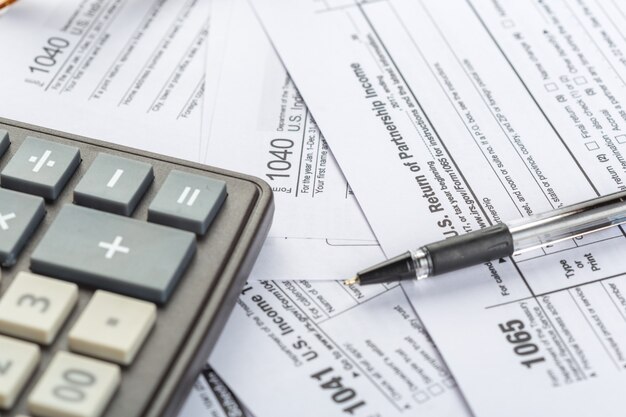Simplify Your Shopping: A Complete Guide to Calculating Sales Tax
When stepping out to make a purchase, it’s typical to see a slight bump in the final amount at checkout—a little something known as sales tax. Although this may seem like an extra, perplexing number added to your bill, understanding how sales tax is calculated can be empowering. It’s more than just a number; it's part of managing your expenses and budgets effectively. This guide will provide a clear approach to understanding and calculating sales tax, shedding light on everything from basic principles to deeper insights into related aspects such as exemptions and regional variances.
🎯 The Basics of Sales Tax
Sales tax is a consumption tax imposed by the government on the sale of goods and services. A few key points about sales tax include:
- Sales tax is calculated as a percentage of the sale price of the goods or services purchased.
- The rate and application of sales tax can vary depending on geographical location (state, county, or city).
- Certain items might be exempt from sales tax, depending on local laws. For instance, some states do not tax essential items like groceries or prescription medications.
Understanding Sales Tax Rates
The sales tax rate can vary significantly, and being familiar with the rate in your area is crucial. Here's how these rates are generally structured:
- State Sales Tax: This is the baseline percentage set by the state.
- Local Sales Taxes: Additional sales tax levied by county, city, or district.
For example, if you live in a location with a 6% state sales tax and a 2% city tax, your total sales tax rate is 8%.
🧮 How to Calculate Sales Tax in Easy Steps
Calculating sales tax doesn’t require advanced math skills. Follow these simple steps to determine how much sales tax you'll pay:
Identify the total sales tax rate applicable to your area. This could include state, county, and city taxes.
Example: State tax (6%) + City tax (2%) = Total tax rate of 8%.
Convert the percentage into a decimal by dividing by 100.
Example: 8% becomes 0.08.
Multiply the pre-tax price of your item by the decimal sales tax rate.
Example: If an item costs $50 before tax, $50 x 0.08 = $4.
Add the sales tax to the pre-tax price to find the total cost.
Example: $50 + $4 = $54.
Quick Calculation Tip
To make calculation faster in your head:
- Multiply the price by the tax rate.
- Add the tax directly to the price.
You can easily use a calculator on your smartphone to streamline this process, ensuring you're budgeting accurately even on the go.
🌎 Navigating Regional Differences in Sales Tax
Sales tax rates aren’t consistent across the board. Some states and localities have specific rules regarding what is taxable and at what rate. Here’s a breakdown to help you navigate these differences:
States Without Sales Tax
Certain states, such as Oregon and Delaware, do not levy sales tax at the state level, providing significant savings for buyers in those regions.
Tax Holidays
Many states offer tax holidays—specific days when sales tax is waived for particular items, such as school supplies or energy-efficient appliances. These are perfect times to make big purchases.
Online Purchases
Online sales tax collection can depend on whether the seller has a physical presence in your state. However, recent trends lean towards taxing online sales more uniformly to level the playing field between online and brick-and-mortar stores.
👀 Important Considerations and Exemptions
Not all sales are subject to taxation. Understanding these can save money and avoid potential confusion:
Common Tax-Exemptions
- Essential Goods: Items like groceries and medicines might be exempt.
- Nonprofits: Purchases made by nonprofit entities could be tax-free.
- Resale: If you purchase items intended for resale, they might not be taxed.
Practical Tips for Managing Sales Tax Costs
- Keep informed about local tax changes or holidays to leverage savings opportunities.
- When budgeting for large items, always calculate the total cost including sales tax upfront.
- Confirm applicable sales tax rates before traveling to another state or making large out-of-state purchases to avoid surprises.
📊 Quick Reference Summary
To sum up the essentials of managing sales tax, here's a handy table that encapsulates the key points to remember:
| Concept | Key Takeaway |
|---|---|
| Sales Tax Calculation | Multiply pre-tax price by the local tax rate. |
| Sales Tax Rate | Comprising local, county, and state taxes. |
| Online Purchases | Check the seller’s physical presence for tax rules. |
| Exemptions | Consider exemptions on essentials and non-profits. |
| Tax Holidays | Plan purchases to take advantage of tax-free days. |
Sales tax might seem like a minor detail, but it impacts every purchase and can influence your overall budgeting strategy. By mastering the calculation process and understanding regional variations, you’re not just getting a handle on an extra fee—you’re gaining insights into smarter spending. When you know how much sales tax you'll pay, you take control of your finances with full transparency. This empowers you to make informed consumer choices, whether you’re indulging in big purchases or simply stopping by your favorite local store.

Related Topics
- a Sales Tax Is a Type Of
- Can I Deduct Vehicle Sales Tax On My Federal Return
- Do Gross Sales Include Sales Tax
- Do I Need To Collect Sales Tax For Selling Online
- Do You Pay Sales Tax At The Dealership Or Dmv
- Do You Pay Sales Tax On a House
- Do You Pay Sales Tax On Groceries In Washington State
- Do You Pay Sales Tax When You Buy a House
- Does Alaska Have a Sales Tax
- Does Alaska Have Sales Tax